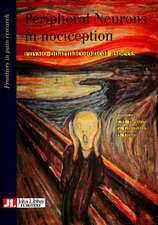Secondary Insults After ICH: From Mechanisms to Clinical Translation
Autor Gaiqing Wangen Limba Engleză Paperback – dec 2016
Preț: 758.72 lei
Preț vechi: 882.28 lei
-14% Nou
Puncte Express: 1138
Preț estimativ în valută:
145.23€ • 157.80$ • 122.07£
145.23€ • 157.80$ • 122.07£
Carte disponibilă
Livrare economică 31 martie-14 aprilie
Preluare comenzi: 021 569.72.76
Specificații
ISBN-13: 9781634856423
ISBN-10: 1634856422
Pagini: 100
Dimensiuni: 155 x 230 x 12 mm
Greutate: 0.24 kg
Editura: Nova Science Publishers Inc
Colecția Nova Science Publishers Inc
ISBN-10: 1634856422
Pagini: 100
Dimensiuni: 155 x 230 x 12 mm
Greutate: 0.24 kg
Editura: Nova Science Publishers Inc
Colecția Nova Science Publishers Inc
Cuprins
Preface; Abstract; Keywords; Methods; The Secondary Insults & Interventions after Intracerebral Hemorrhage: Current Understanding; Hematoma Expansion: Clinical & Molecular Predictors & Corresponding Pharmacological Treatment; Hematoma Resolution in Intracerebral Hemorrhage: From Mechanisms to Clinical Translation; References; Index.


















